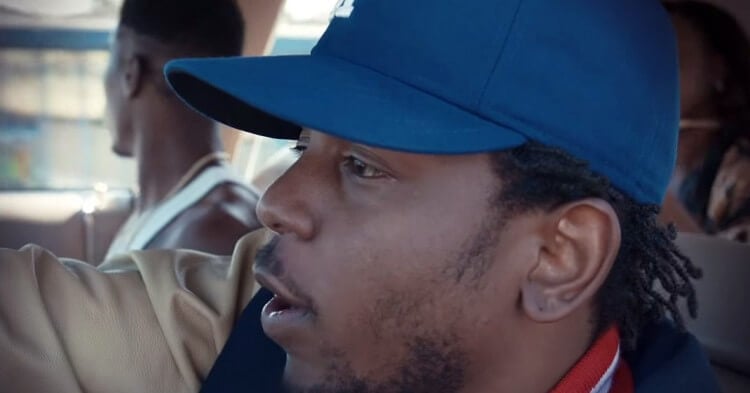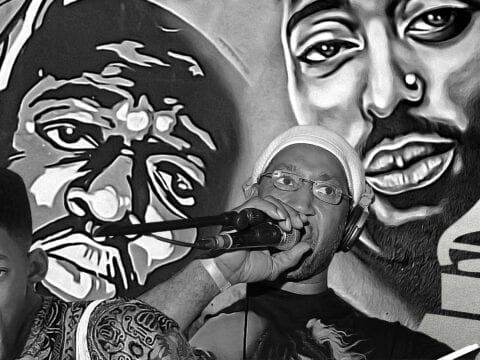To Pimp a Butterfly, Kendrick Lamar’s most recent album, is a massive work of poetic art and subversion. Aside from earning an instantaneous place in the canon of West Coast hip hop, TPAB demonstrates artistry that defies lyrical arrangement or musical topes.

The tracks on the album are all musically wonderful, sure, but Lamar’s use of lyricism, rhythm, and sound are not a series of independent features of the album, but the threads he uses to construct a much larger and profound narrative of otherness, culture, identity, the self, and society.
Somethin’s in the water
And if I gotta brown nose for some gold
Then I’d rather be a bum than a motherf*****’ baller
In a word, the album is important. Within two weeks of the album’s debut, Brian Mooney, a graduate student and educator at Teachers College (at Columbia University), “dropped everything” to teach TPAB alongside Toni Morrison’s The Bluest Eye. On the same day (March 27th, 2015) Andreas Hale compared Lamar and his work to Ralph Ellison and The Invisible Man. To Pimp a Butterfly was released March 15th, 2015, which means that it only took twelve short days for Lamar to be spoken about in terms of two of the most powerful, influential, and revered voices in the history of black American art and literature.
Unpacking the album in its entirety is beyond the capacity or aspirations of this article– indeed, TPAB is likely fated for a long career of being taught in semester-long intervals; however, we would be remiss if we didn’t take a good look at one of the many gems of Lamar’s (current) opus, “King Kunta.”
Kendrick Lamar’s Inspiration Behind the Song
The song’s title is an allusion to Roots, the immensely popular novel and miniseries written by Alex Haley which Lamar grew up watching.
Haley’s Roots is a quintessential narrative of slavery that follows the life of Kunta Kinte and his descendants through the historical timeline of American slavery. As a young man, Kunta is kidnapped and sold by slave traders as he is engaging in a cultural rite of passage—the process through which Kunta is meant to become a man in his own culture is fractured and invalidated, and he is then sold into chattel slavery.
The narrative that follows is largely that of maintaining and defending the idea of a dignified black identity against mortifying and hopeless oppression. The theme is famously demonstrated in the scene in which Kunta is whipped mercilessly for refusing to respond to “Toby” a name given to him by the white family that purchases him. Essentially, the character is refusing to let his heritage and identity be reduced to a manage word.
The album’s title, To Pimp a Butterfly, alludes to that idea which Kunta Kinte suffers in Roots—that black life, culture, and heritage—these things of immense beauty, spirit, and life—can be violently reduced to an item, product, or genre.
Lamar seems to see this cultural reductionism in America’s fetishization of black art and culture—that the realms of hip hop and black artistry are being demarcated by white standards of music and the tradition of popular music. In other words, the butterfly—this beautiful thing of vivid color and soaring potential—is being trafficked and sold for the empty purpose of satisfying a bleak fantasy of control, submission, and otherness.
Who is King Kunta?
“King Kunta” is similarly encoded. Kunta Kinte is a chattel slave, far from a king—his destiny is wholly rewritten by his masters, down to his very name. The character’s foot is even cut off and mutilated as a punishment for trying to escape the plantation and the identity as a possession that is superimposed onto him. Lamar, though, who sees the fetishization of black culture through popular, watered-down and white-washed sounds and visions of hip hop culture, reimagines the character as himself in the hip hop tradition.
Though Lamar has reached huge acclaim in the world of hip hop, and, therefore, among white fans of popular music, he refuses to yield to the reduction of himself to a lifeless and marketable idea of black culture. He refuses to take losses
and, unlike Kunta who ran until he was forced to walk, Lamar now run the game
in defiance of the informal tariffs on authentic black voices that hover ominously along the border of hip hop and caricatured notions of black life that dominate the imagination of white America.
Kendric’s massive popularity combined with his articulate and brilliant cultural commentary is an important and beautiful moment in art, which is a freedom that his detractors would hack away (Everybody wanna’ cut the legs off him
), as Kunta Kinte’s foot was hacked away as a punishment for seeking a free and authentic life.
What does King Kunta Mean to Kendric?
In the song, Lamar is critical both of the systems that sought to control and deride him as a young man and the forces within the world of hip hop that is threatening the genre’s position as an authentically influential and cultural staple of many black American communities. He even compares ghostwriting—when one person composes a work of art to be credited to another—to sharing the bottom bunk of a two-man cell
. The comparison is meant to indicate that those rappers who use ghostwriters are sacrificing their identity as artists to an oppressive system of control and derision IE prison.
Furthermore, the prison has become an expectation for young black men, which prompts the lines Ah yeah, f*** the Judge / Made it past 25 and there I was
. Lamar, like his vision of Kunta Kinte, is escaping the perverted and commodified expectations of himself and relentlessly carving out a space for hip hop and black identity beyond the narrow standards of white entertainment that once seemed lost.
Granted, these are only a few of the themes in this massive song on this massive album. This work is packed to the teeth with experimental language, lyrical conceit, allusions to other works of black artists (most popularly, the references to yams and their function in the work of Ellison and Achebe, as well as a massive part of West Africa’s economy), and moments of self-conscious tension regarding identity how to cultivate it on a personal level while honoring its relationship to culture and race. In case you haven’t been paying attention, I will spell it out for you: Kendrick Lamar’s To Pimp a Butterfly is hugely important, beautiful, and worth paying attention to.
Kendrick Lamar - King Kunta
View Song Lyrics Here!





